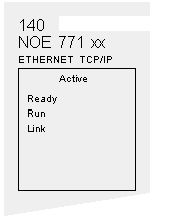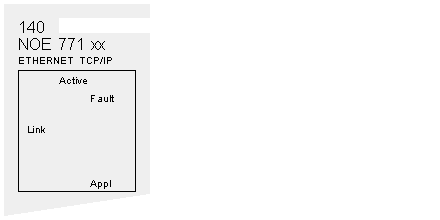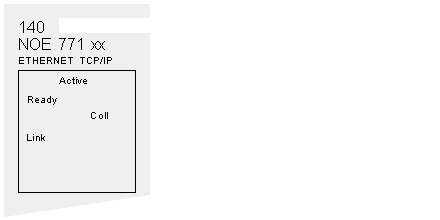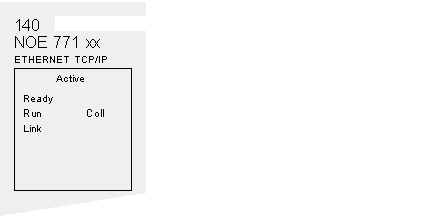|
Responding to Errors
|
|
|
Original instructions
|

|
Step
|
Action
|
|---|---|
|
1
|
Make sure the NOE module and the controller are installed properly.
|
|
2
|
Verify that the controller is working; if it is not, replace it.
|
|
3
|
If neither the new controller nor the NOE module functions, replace the backplane.
|
|
4
|
Make sure that the number of network option modules (including NOE, NWM, NOM, and CRP 811 modules) in the backplane is not exceeded:
|
|
5
|
Check the version of the controller executive. You must have version 2.0 or later to support the Ethernet module. Earlier versions do not recognize the module.
|
|
6
|
If steps 4 and 5 above check out ok, replace the NOE module.
|
|
Step
|
Action
|
|---|---|
|
1
|
Make sure that power has been applied to the backplane.
|
|
2
|
If step 1 checks out ok, replace the NOE module.
|
|
Step
|
Action
|
|---|---|
|
1
|
Make sure that the cable has been installed correctly and the module is functioning properly.
|
|
2
|
Verify that the hub/switch is working properly.
|
|
3
|
If steps 1 and 2 check ok, replace the NOE module.
|
|
If
|
Then
|
|---|---|
|
The Ready LED is on and the Kernel LED is flashing
|
The module has detected an invalid software image.
|
|
The Ready LED is on and the Kernel LED is shining steadily,
|
An attempt to download a software image has failed and the module is in kernel mode.
|
|
Either of the above conditions exists.
|


|
Step
|
Action
|
|---|---|
|
1
|
Make sure that the cable has been installed and is working properly.
|
|
2
|
Verify that the Ethernet Hub/Switch is working properly.
|

|
Number of Flashes in Sequence
|
Action
|
|---|---|
|
Three
|
Check Ethernet connection
|
|
Four
|
Change IP address
|
|
Five
|
Provide IP address
|
|
Six
|
Connect using default IP address and configure
|
|
Seven
|